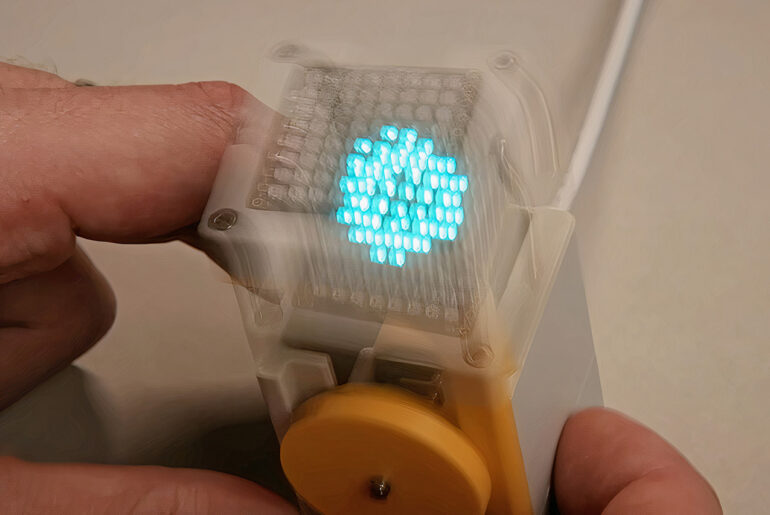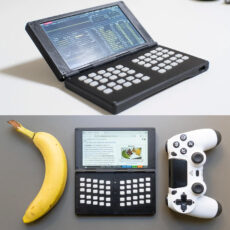
Matthew Lim decided to experiment with an ESP32 board that sports a tiny 8×8 LED matrix, capable of flickering through a digital recreation of fluid that looked eerily similar to moving water. He found it fascinating, and an idea sprang to mind: try if he could fit a few pieces of hobbyist gear into a pocket-sized 3D window.
Persistence of vision plays a role in this, the same effect that turns bike spokes into solid circles at night. Lim’s version used a back-and-forth bouncing motion rather than fans and globes; an N20 motor drives a rack and pinion arm down a 20mm track, with an encoder tracking each teeny-tiny movement. That happens to be the same width as the LED grid, so each full swing creates the appearance of depth. The motor cycles back and forth 16 times per second, and the LEDs flash in time with the encoder data, forming stacked pixels one after the other. With eight ‘cutting’ from that low height, you can make cubes, spheres, and waves that seem to float like ghosts in a matchbox.
- 15.6" FHD Portable Monitor - Featuring a 1920*1080P resolution, 178°FULL viewing angle, HDR, and Low Blue Light Super Clear IPS A-grade screen, this...
- Double Type-C Port -For Plug & Play - Portable monitor features 2 full-featured Type-C ports and 1 MINI HDMI port. You can easily access your favorite...
- Portable & Light Weight - At just 1.43lbs and 0.31 inch thin, this portable laptop monitor is ultra-portable and perfect for on-the-go productivity or...
Lim began with a breadboard, connecting the ESP32 to the motor driver and encoder; a rapid spin of the shaft cycled through all of the rows of the LED matrix, demonstrating that the encoder could detect movement and turn the lights on at the appropriate moment. He was equally pleased as he was frustrated by the tangled mess of cables dangling off the board, and it didn’t help that a swipe of the USB cable wouldn’t do the trick. A custom power solution was required, so he used the EasyEDA software to design a small PCB that draws power from the USB ports, houses a DRV8838 driver, and allows room for the ESP32 and motor leads. After sending the design to JLCPCB, he received prototypes for pennies with his company brand stenciled on them; from there, it was only a matter of soldering and running a few flexible silicone wires through for some give as the whole thing jiggled.
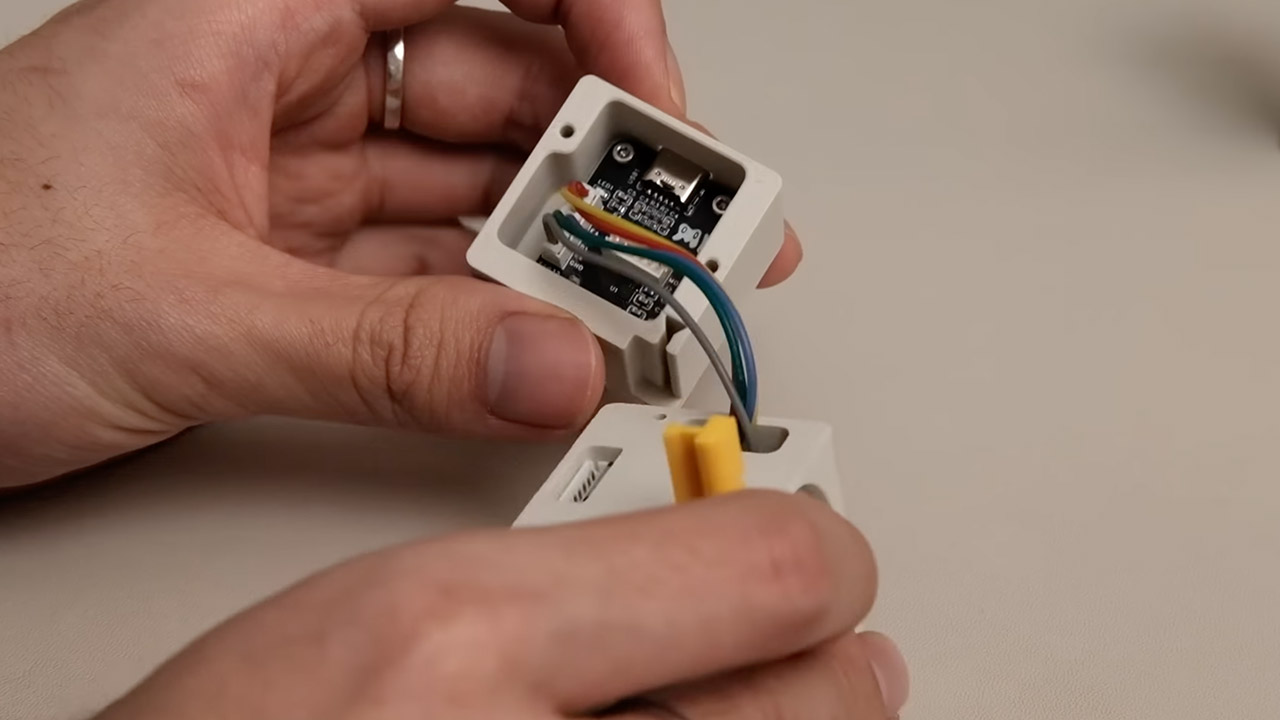
Getting the mechanics right took a lot of patience – the kind of patience required to print a part, try it out, tweak with the file overnight, and then try again. Lim’s rack is set on V-slot rails that are fastened to the LED module, and the pinion, a 3D printed gear, grabs the rack teeth. Early versions would get stuck on the tolerances, so he adjusted the curves and clearances until the arm fit easily. The base is divided into top and bottom halves, and the PCB and motor are secured with screws. Wires are tucked away, stress areas are sealed with hot glue, and the entire assembly clamps shut tightly. One last gear is fitted onto the motor shaft and fastened with a grub screw. When he had it all together, it was as light as a feather, with the 3D printed case indicating that some trial and error had occurred.
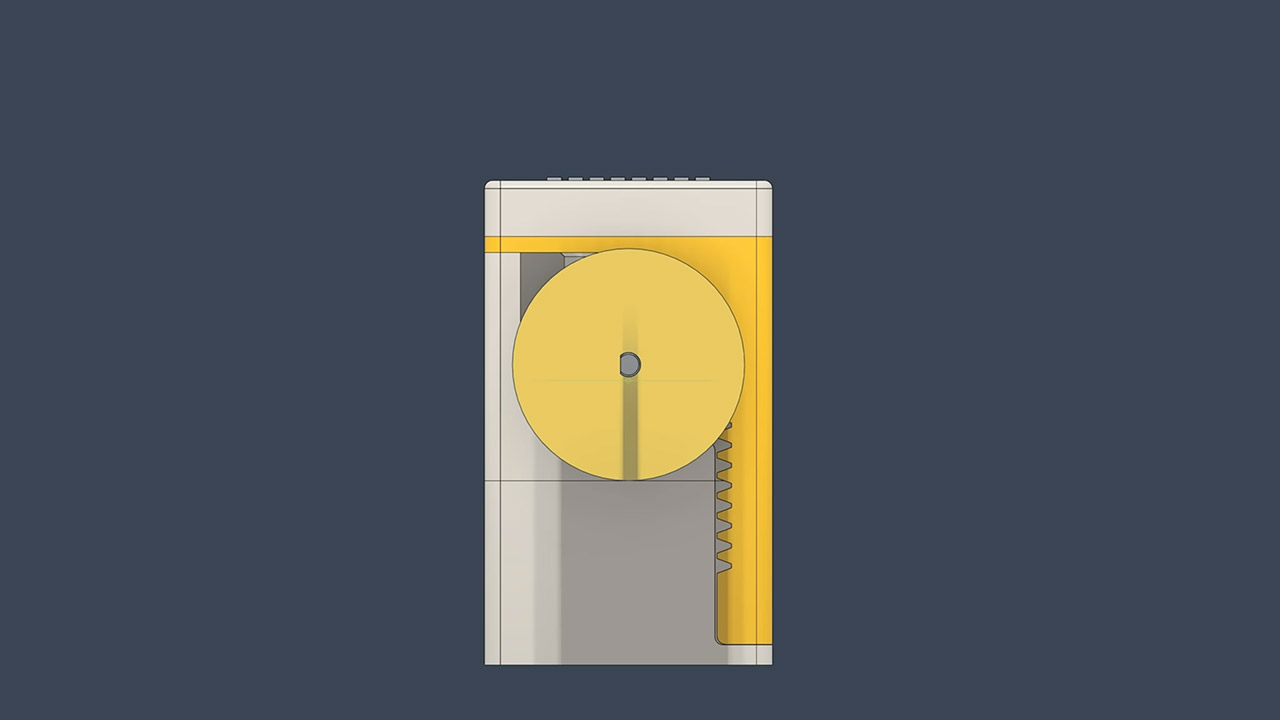
Code brought it to life, but not without some friction— literal and otherwise. Lim measured the motor’s true speed under load, which was far from factory specs, and mapped reversals to frames. Faster pulses smoothed animations while slower pulses stabilized the bounce at stroke endings. He settled on 16 frames per second for the whole 20mm, favoring space over speed. Encoder math sealed the deal: a 24mm pinion rotates 95.5 degrees over the whole run, meaning layers fire every 11.9 degrees. Backlash in the motor’s gears threw off measurements so Lim had to manually adjust dead zones and offsets. A test run layered colors from top to bottom, the tower wobbled but stayed in shape.
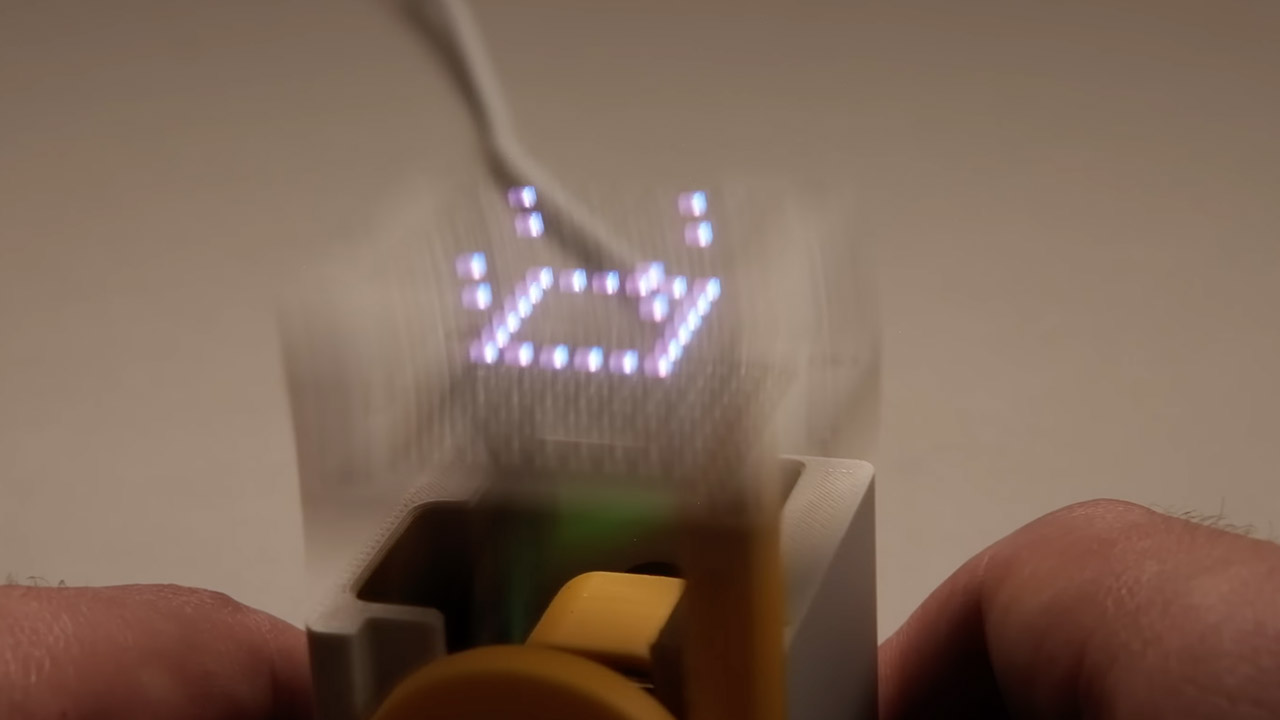
Animations followed, each one pulling the viewer closer to the glow. A wave ripples across the cube’s face, cresting in blue. A wireframe box hangs still, its edges sharp against the void. Spheres bloom outward, coins flip end to end, and pendulums swing in slow arcs. The real magic is in the fluid, a 3D swirl inspired by the ESP32’s 2D tease. Smoothed particle hydrodynamics churns the numbers, tilting the board to steer the currents using the built-in IMU. The flow is lazy, but the effect is hypnotic, with droplets dancing in a space smaller than a die.
[Source]

